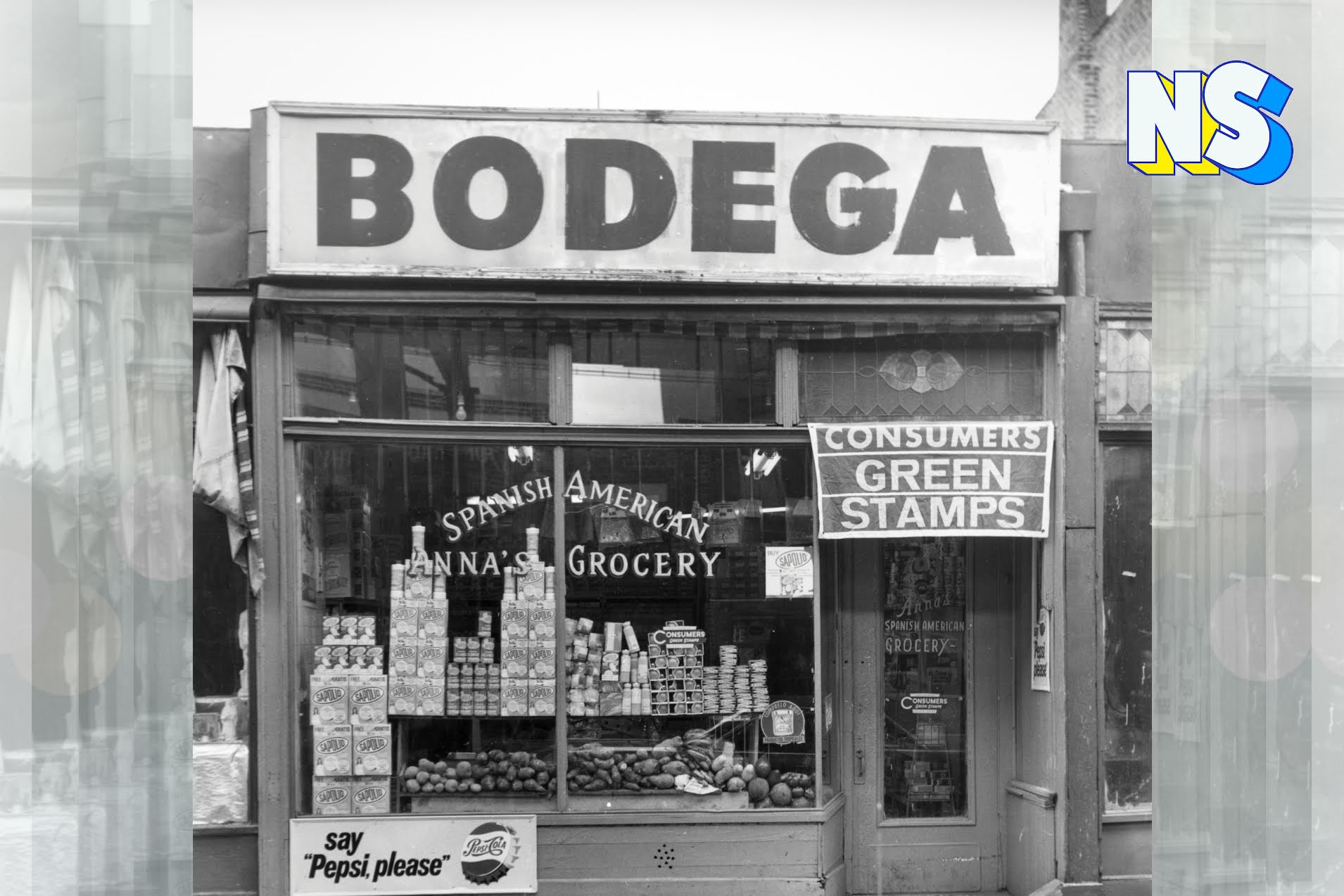Image courtesy of Nuestro Stories.
It’s late at night, and you’re hungry. If you live in New York City, there is a place you can go 24/7 — the Bodega.
With its brightly colored awnings and faded pictures of food you will never find inside, the Bodega is a New York institution. It is part of the city’s residents' everyday life. It’s the place where everyone knows your name, and the semi-feral bodega cat called El Gato opens one eye as you enter the store, then goes back to sleep on a pile of Hot Takis.
It’s the only place you will find the Archangel Miguel (on a bodega candle) next to the ketchup bottle and the Cafe Bustelo can.
From a Spanish Bodega to a Latin symbol
In Spanish, bodega, a term dating back to the 1840s, means wine cellar, the hull of ships or warehouses. Today in the United States, the word bodega refers to New York’s owner-operated convenience stores, often run by Yemeni and Latino immigrants - and a place called home.
In 1902, The Sun newspaper reported that New York City would soon have its first bodega, which it described as a “barroom” from Spain.
In the mid-twentieth century, Bodegas were popularized by Puerto Ricans. Some stores were named after places in the archipelago like Manati and Loiza.
Puerto Ricans began establishing themselves in the city in 1917, in what became known as colonias, and the bodegas started cropping up to service their needs. Some accounts place the rise of the bodegas in the 1920s on Franklin Avenue in the Greenpoint section of Brooklyn, where Puerto Ricans began to settle.
The second wave of Puerto Rican immigrants arrived in New York City after World War II and cemented the bodega culture.
In 1965, the United States invaded the Dominican Republic, and a large emigration of Dominicans to New York City began. By 2013, Dominicans surpassed Puerto Ricans as the largest Hispanic group in New York City. They also immersed themselves in the bodega culture.
Today, the modern bodega represents the diversity of New York City - its owners are Dominican, Puerto Rican, Yemeni, and other more recent immigrants from Egypt, Korea, and the Philippines.
But, regardless of who is at the counter, the bodega serves as a food oasis for many in low-income areas with limited access to supermarkets and grocery stores and affordable, healthy food.
Bodegas are our kitchens and living rooms; bodegueros serve as our local gossip givers and takers and, once in a while, a shoulder to cry on. You go to the bodega to get some milk, but you walk out with homemade lemonade, empanadas in a brown paper bag to sop up the grease, and some Hispanic wisdom.
This, my friends, is life. In New York City, you can even buy dreams at the bodega.
https://draft.nuestrostories.com//wp-content/uploads/2022/06/Susanne-182x250.jpeg





